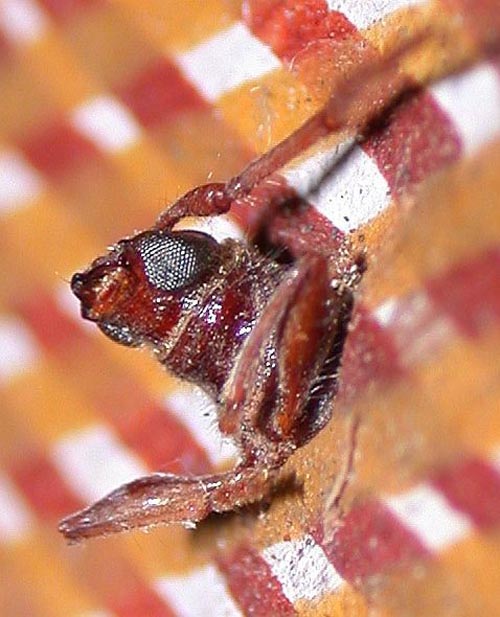Australian Aboriginal and Torres Strait Islander Peoples have traditionally painted on bark.
ANKAAA Harvesting Traditional Knowledge – a two-way learning project – Yirrkala from The Mulka Project on Vimeo.
Bark for Indigenous Australian bark painting is cut from the trunk of the stringybark tree (Eucalyptus tetradonta) during the wet season. At this time the high moisture content within the bark facilitates its removal.
The rough, outer bark is stripped off and the thinned inner bark dried and flattened by placing the bark onto a fire, to cure and reduce moisture content. Later the surfaces are scraped and flattened with weights, and in some cases restraining sticks are attached at each end of the painting.
Traditional mineral pigments for painting are: white from pipeclay or kaolin, gypsum or chalk; yellow and red from iron oxides; black from manganese oxide, charcoal and more recently battery black. Pigments are traditionally ground on a stone and the powder mixed with water and a binding medium, such as orchid juice, beeswax, fats, egg yolk, tree and plant gums or resins.
In recent times artists have begun to mix both traditional and synthetic pigments in a synthetic binder, such as Aquadhere (polyvinyl acetate emulsion), in attempt to fix the pigment more securely to the bark. This can give the painting a glossy appearance.

Insect emerging from a painting. Courtesy of QAGOMA
Causes of deterioration
If not well dried during preparation, the bark may crack, split and warp over time. Bark absorbs moisture and fluctuations in humidity causing the bark to expand and contract across the wood grain.
The constant opening and closing of cracks may result in physical damage of the bark and cause paint losses.
Hanging
Physical damage can be caused by poor hanging and display. Damage from poor ventilation, drilling holes in them, or framing them in such a way as to restrain them into an unnatural curve can damage barks. There is also a natural tendency for the bark to return to its original curved shape.
Hang on a wall that is protected from direct sunlight and gross changes in temperature and relative humidity, and is not subject to rising damp eg. an internal wall away from the bathroom.
Pest attack
Biological factors such as insect attack and larvae infestation damages the bark painting.
Mould
One of the most common problems faced by owners of bark paintings is mould growth, which can cause staining and discolouration to the pigments. This growth can be viewed as an environmental indicator for high relative humidity. Mould spores are present in the atmosphere and become active above 60-70% RH.
Treatment
Conservation treatments revolve around controlling the environment in which the bark is stored or displayed. Mould is best treated by brushing the mould off the object into the nozzle of a vacuum fitted with a micro (HEPA) filter. Some mould staining can be reversed and damage to the surface can be stabilised. Because mould spores are allergens, it’s important to wear protective clothing and disposable gloves, as well as a particle mask and/or a respirator to prevent inhalation.
Do not expose the mould to sunlight as this will kill the mould and make it much harder to remove.
Barks that are not fitted with restraining sticks during production can be retro-fitted using custom-made aluminium bracings which hangs on the wall from hooks. Heavier, warped or fragile barks may require a fully cushioned fibreglass backing, clipped to the work for support and hanging. If a bark is particularly heavy or large a ledge can be moulded into the base of the backing to carry the weight. These hanging systems should be professionally made and customised to each bark.
‘European’ style framing is not suitable for Australian Indigenous bark paintings.
Fragile barks may be mounted with a full backing and covered by a glass or Perspex box. There is no real way to prevent the movement of the bark except to keep the work in as stable an environment as possible.
The ideal position should have good air circulation (front and back), ambient light (no direct sunlight), clean dust-free environment, and stable relative humidity around 50%.
The AICCM Objects Special Interest Group is for those interested in the conservation of Australian Indigenous materials including bark paintings. Join this group, contribute to its activities, or speak to a specialist conservator.
Need a conservator? Find one here
Resources
- Conserving Aboriginal paintings (National Gallery of Australia)
- Mounting system for Bark Paintings (Grimwade Centre for Cultural Materials Conservation)
- Purchasing Aboriginal art: How to Buy Ethically (Indigenous Art Code Ltd)